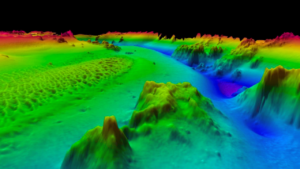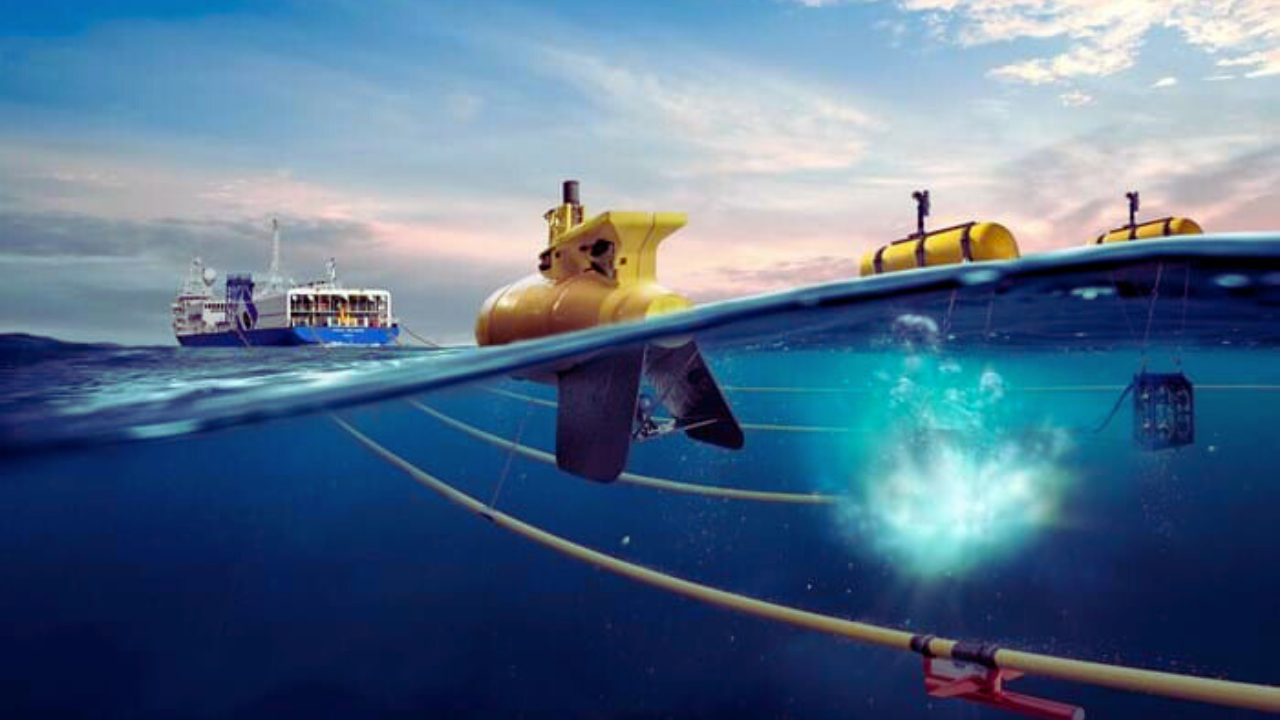The Earth is an ever-changing system, with geophysical processes continuously shaping its surface and atmosphere. These processes include the movement of tectonic plates, volcanic activity, seismic events, ocean currents, and atmospheric dynamics, all of which drive fundamental changes in the environment. Tectonic plates, for instance, constantly shift and interact, creating mountain ranges, causing earthquakes, and triggering volcanic eruptions. Meanwhile, the flow of ocean currents helps regulate global temperatures and weather patterns, influencing climate systems and supporting marine ecosystems. The Earth’s atmosphere is also affected by a range of natural processes, from the Earth’s rotation to solar radiation, which play significant roles in maintaining the delicate balance that supports life.
These natural geophysical processes will continue to have profound effects on the global environment. Rising temperatures due to climate change are expected to amplify the intensity and frequency of extreme weather events, including hurricanes, droughts, and floods, all of which are directly influenced by atmospheric and oceanic processes. The shifting of tectonic plates also contributes to long-term changes in the landscape and biodiversity, while the melting of polar ice caps due to rising temperatures will significantly impact global sea levels and coastal ecosystems. These processes are tightly interwoven, and their impact on climate and ecosystems will be more pronounced as human activities continue to alter the Earth’s natural balance.
The interaction between natural geophysical processes and human-induced factors will be especially significant in 2025. Human activities such as deforestation, mining, industrialization, and greenhouse gas emissions are accelerating environmental changes that were once shaped primarily by natural processes. The increased release of carbon dioxide and other pollutants into the atmosphere is exacerbating the greenhouse effect, leading to further shifts in global weather patterns. The destruction of natural habitats and disruption of ecosystems due to urbanization and agriculture are intensifying the challenges posed by natural forces. As these interactions become more complex, it is crucial for humanity to better understand the Earth’s geophysical mechanisms and develop strategies for sustainable living, climate adaptation, and disaster resilience to ensure a balanced future for both nature and human society.
Geophysical Processes

Geophysical processes refer to the natural physical phenomena occurring within the Earth and its atmosphere, which influence environmental changes across the globe. These processes are driven by Earth’s internal dynamics, the energy received from the Sun, and external forces such as the Moon’s gravitational pull. They play a crucial role in shaping the planet’s surface and maintaining its overall equilibrium. Examples of these processes include the movement of tectonic plates, volcanic eruptions, seismic activity, and the circulation of the atmosphere. They also influence large-scale events like weather patterns, ocean currents, and the Earth’s magnetic field.
The study and monitoring of geophysical processes will become increasingly important due to the rapid changes induced by global warming, human industrial activities, and frequent natural disasters. Understanding these processes is essential for predicting future environmental conditions, preparing for natural hazards, and mitigating the impact of climate change. The continuous shifts in tectonic plates, the rise of volcanic activity, and the alteration of atmospheric circulation patterns are all closely linked to human influence, emphasizing the need for more advanced research and technology to address these challenges.
Geophysical Processes: An Overview
Geophysical processes are the natural forces and phenomena that shape the Earth’s structure and influence environmental changes across the globe. These processes arise from the Earth’s internal heat, energy from the Sun, and the gravitational pull from external bodies like the Moon. From the movements of tectonic plates to volcanic eruptions and atmospheric circulation, geophysical processes play a vital role in shaping both the Earth’s surface and climate. They not only affect geological structures but also influence weather patterns, ocean currents, and the distribution of life on Earth.
Plate Tectonics: The Shaping Force of Earth’s Surface
Plate tectonics is one of the most important geophysical processes, driving the movement of Earth’s lithospheric plates. These plates constantly shift, collide, and pull apart, causing earthquakes, volcanic eruptions, and the formation of mountain ranges. The movement of tectonic plates also plays a significant role in the distribution of natural resources, such as minerals and fossil fuels, and influences the geography of continents and oceans. In 2025, ongoing shifts in tectonic plates could lead to further seismic activity, which may significantly impact ecosystems and human societies.
Volcanic Activity: Nature’s Fiery Impact
Volcanic activity occurs when molten rock, gases, and ash from deep within the Earth escape to the surface, often resulting in the formation of new landforms like islands and volcanic mountains. These eruptions can cause widespread destruction, including landslides, ash clouds, and lava flows, which can dramatically alter local ecosystems and impact global weather patterns. Volcanic eruptions can also release large amounts of carbon dioxide and ash, contributing to atmospheric changes and, in some cases, temporary global cooling. The frequency and intensity of volcanic events will continue to shape Earth’s environment in 2025.
Earthquakes: Sudden and Powerful Shifts
Earthquakes are the result of the sudden release of energy stored along faults in the Earth’s crust, typically occurring due to the movement of tectonic plates. These powerful events can lead to devastating impacts, including ground shaking, tsunamis, and the destruction of infrastructure. Earthquakes also play a role in reshaping the Earth’s surface, creating new landforms or even altering the course of rivers and lakes. As urbanization increases in seismically active regions, understanding and predicting earthquakes will be essential to minimizing the risks posed by these natural events.
Ocean Currents: The Circulators of Global Climate
Ocean currents are large-scale flows of seawater that circulate throughout the world’s oceans. These currents are driven by factors such as wind patterns, the Earth’s rotation, and the salinity and temperature of seawater. They play a crucial role in regulating Earth’s climate by redistributing heat around the globe, influencing weather patterns, and supporting marine life. In 2025, changing ocean currents, often attributed to global warming and climate change, may lead to altered weather systems, rising sea levels, and the disruption of marine ecosystems.
Atmospheric Circulation: The Engine Behind Weather Patterns
Atmospheric circulation refers to the movement of air masses around the Earth, driven by the Sun’s energy and the planet’s rotation. This process results in the formation of weather patterns such as winds, clouds, and precipitation. The Earth’s atmosphere is divided into different circulation cells—such as the Hadley, Ferrel, and Polar cells—that influence regional climates and weather conditions. In 2025, understanding atmospheric circulation will be increasingly important as it influences the intensity and frequency of storms, droughts, and extreme weather events, all of which are becoming more common due to climate change.
Gravitational Forces: Influencing Earth’s Movements
Gravitational forces, particularly the pull of the Moon and the Sun, exert a significant influence on the Earth’s movements. These forces are responsible for phenomena such as tides, the Earth’s rotation, and even its axial tilt. Tidal movements, for example, play a crucial role in shaping coastal ecosystems and influencing oceanic circulation. Changes in gravitational forces, whether from the Earth’s internal dynamics or external forces, can lead to subtle shifts in Earth’s motion and, over long periods, impact the planet’s climate and environment.
The Impact of Human Activities on Geophysical Processes
While geophysical processes are natural phenomena, human activities are increasingly influencing their patterns and impacts. Industrialization, deforestation, urbanization, and the burning of fossil fuels have amplified certain geophysical effects, such as climate change, air pollution, and the acceleration of natural disasters. Human-induced climate change, for example, is altering atmospheric circulation and ocean currents, leading to more extreme weather events. Understanding the interaction between human activities and geophysical processes is vital for mitigating risks and adapting to the evolving environment in 2025 and beyond.
Here’s a quick overview of the major geophysical processes
| Geophysical Process | Description | Impact on Environment |
| Plate Tectonics | Movement of Earth’s lithospheric plates | Earthquakes, mountain formation, and volcanic eruptions |
| Volcanism | Eruptions of magma from beneath the Earth’s crust | Release of gases, ash clouds, and lava flow |
| Atmospheric Circulation | Global wind patterns influenced by Earth’s rotation | Climate regulation and weather systems |
| Hydrological Cycle | Water cycle involving evaporation, condensation, and precipitation | Impact on water resources, flooding, and droughts |
| Magnetic Field | Earth’s magnetic field is generated by the outer core | Protection from solar radiation and space weather |
The Role of Plate Tectonics in 2025
Plate tectonics involves the movement of Earth’s lithosphere, which is divided into tectonic plates. These plates float on the semi-fluid asthenosphere beneath them and interact at plate boundaries. In 2025, understanding tectonic movements is crucial due to their potential to cause earthquakes, volcanic eruptions, and the formation of mountains.
Plate tectonics contribute significantly to
- Earthquakes: These occur when tectonic plates shift, releasing energy. As urbanization increases, cities in earthquake-prone areas face more challenges.
- Volcanic Eruptions: Volcanic activity is linked to plate movement, leading to eruptions that can impact global weather patterns, create new landforms, and release gases into the atmosphere.
- Mountain Building: The collision of plates creates mountain ranges like the Himalayas, which are still growing today.
- Impact of Plate Tectonics on Earth’s Environment in 2025: As human populations grow, understanding these movements becomes increasingly important to protect vulnerable regions. Earthquake-resistant infrastructure and early warning systems are more essential than ever to safeguard communities.
Volcanic Activity and Its Impact in 2025
Volcanic activity is one of the most dramatic geophysical processes, characterized by the eruption of molten rock, gases, and ash from beneath the Earth’s surface. Volcanoes are typically located along tectonic plate boundaries where the Earth’s crust is more likely to be unstable. The eruption of a volcano can release vast amounts of ash, sulfur dioxide, and other gases into the atmosphere, affecting air quality, weather patterns, and even global temperatures. Volcanic eruptions can create new landforms, such as islands and mountains, while also devastating nearby ecosystems and human settlements.
The impact of volcanic activity will continue to be felt globally. Increased volcanic eruptions due to tectonic shifts or changes in geological pressure could have lasting effects on the atmosphere, contributing to short-term cooling or altering precipitation patterns. Additionally, volcanic ash clouds can disrupt air travel and pose health risks to humans and animals. The long-term effects of volcanic activity on ecosystems can also be significant, as the release of nutrients from volcanic soil may initially benefit plant life but could also lead to environmental imbalances. Volcanic eruptions will remain an unpredictable yet powerful force shaping Earth’s environment in the coming years.
Global Climate Impact
Volcanic eruptions can significantly influence the Earth’s climate, primarily by releasing large quantities of sulfur dioxide (SO2) into the atmosphere. When sulfur dioxide reacts with water vapor, it forms aerosols that can block sunlight, leading to short-term global cooling. In 2025, these volcanic aerosols could contribute to temporary temperature drops, impacting agriculture, and weather patterns, and even contributing to extreme weather events. This cooling effect could potentially counteract some of the warming caused by human-induced climate change, though only for a limited period.
Air Travel Disruptions
Volcanic eruptions also have the potential to disrupt air travel on a global scale. The ash clouds produced by volcanic activity can reach high altitudes, where they pose a severe hazard to aircraft. In 2025, as global air travel continues to increase, the frequency and intensity of volcanic eruptions could lead to more flight cancellations and delays, particularly in regions near active volcanoes. This disruption could affect not only the aviation industry but also international trade and tourism.
Tectonic Shifts and Earthquake Activity
Volcanoes are often located along tectonic plate boundaries, where the Earth’s crust is most active. As plates shift and move, magma is pushed toward the surface, leading to volcanic eruptions. In 2025, the ongoing movement of these tectonic plates, particularly in areas like the Pacific Ring of Fire, could result in an increase in volcanic activity, often accompanied by earthquakes. This could lead to greater risks for communities living near these volcanoes, making it essential for preparedness and early warning systems.
Local and Regional Environmental Damage
On a more localized level, volcanic eruptions can devastate surrounding ecosystems. Lava flows, pyroclastic flows and ashfall can destroy forests, farmland, and wildlife habitats, leaving a lasting impact on biodiversity. In 2025, eruptions in highly populated or agriculturally dependent regions could have severe consequences for local economies and food security. The immediate environmental destruction could also cause long-term ecosystem imbalances, affecting both plant and animal populations.
Volcanic Soil Fertility and Future Benefits
Despite the destructive nature of volcanic eruptions, they also bring long-term benefits in terms of soil fertility. The ash and minerals released during an eruption can enrich the soil, making it highly fertile for future agricultural use. This “volcanic soil” is rich in nutrients like potassium and phosphorus, which can significantly improve crop yields in the long run. In 2025, this effect could be particularly relevant for regions that experience frequent eruptions, as farmers could capitalize on the enhanced soil quality for more sustainable agriculture in the years following an eruption.
Volcanic Impact on the Environment in 2025
| Volcanic Impact | Effect on the Environment | Predicted Effects in 2025 |
| Ash Clouds | Disrupts air travel, agriculture, and human health | Likely to be more frequent due to intensified volcanic activity |
| Greenhouse Gases | Contributes to global warming | Potential increase in atmospheric CO2 levels |
| Acid Rain | Damages crops and infrastructure | The higher acidity in rain due to volcanic emissions |
| Lava Flow | Destruction of land and infrastructure | New lava flows expected to reshape landscapes |
The Hydrological Cycle and Climate Changes in 2025
The hydrological cycle, also known as the water cycle, involves the continuous movement of water on, above, and below the Earth’s surface. It is a crucial process for sustaining life, and influencing weather patterns, water availability, and ecosystems. The hydrological cycle will be heavily impacted by climate change. Increased evaporation due to higher global temperatures, along with changing precipitation patterns, could exacerbate water scarcity in some regions while leading to flooding in others.
Impacts of Hydrological Cycle in 2025
- Water Scarcity: Increased evaporation rates will cause droughts in areas that are already water-scarce.
- Flooding: More intense rainfall and rapid snowmelt may result in catastrophic flooding.
- Changes in Agriculture: Farmers in affected areas may face challenges in growing crops due to water shortages or excess moisture.
Magnetic Field Changes and Their Environmental Influence
The Earth’s magnetic field is vital for protecting life on the planet by shielding it from harmful solar radiation and cosmic rays. The magnetic field has been gradually weakening, and some studies suggest that this could lead to the reversal of Earth’s magnetic poles, a process known as geomagnetic reversal.
Potential Environmental Consequences in 2025
- Increased Solar Radiation: A weakened magnetic field could expose Earth to higher solar radiation levels, affecting both human health and technological systems.
- Disruptions in Satellites and Communication Systems: The magnetic field also protects satellites from solar winds. A weakened field could result in more frequent malfunctions in satellite systems and GPS technology.
Atmospheric Circulation and Weather Patterns in 2025
Atmospheric circulation refers to the movement of air around the globe. It determines weather patterns and significantly impacts the climate. The Earth’s atmosphere is in constant motion, with winds driven by solar radiation and Earth’s rotation.
Impact on Earth’s Environment in 2025
- Extreme Weather Events: Rising temperatures and altered circulation patterns may lead to stronger hurricanes, floods, and droughts.
- Global Warming: The movement of warm and cold air masses may lead to more unpredictable temperature shifts, impacting ecosystems.
Geophysical Processes and Their Effect on Global Ecosystems
Geophysical processes are not only affecting the climate but also the biodiversity of ecosystems around the world. Shifts in weather patterns, temperatures, and water availability directly impact flora and fauna.
Environmental Effects in 2025
- Coral Bleaching: Rising ocean temperatures, due to the hydrological cycle changes, are likely to lead to mass coral bleaching events, which could decimate coral reef ecosystems.
- Habitat Loss: Changes in weather and tectonic events might displace wildlife, threatening biodiversity.
The Need for Monitoring Geophysical Processes in 2025
the importance of monitoring geophysical processes such as volcanic activity, tectonic shifts, and atmospheric circulation is more critical than ever. These natural phenomena directly influence the Earth’s environment, climate, and ecosystems, and understanding their patterns is essential for early warning systems and disaster preparedness. With the increasing frequency of extreme weather events, seismic activity, and volcanic eruptions, accurate monitoring helps scientists predict potential hazards and mitigate risks to human populations and infrastructure.
Furthermore, as human activities continue to affect the planet, the interactions between anthropogenic factors and natural geophysical processes must be closely monitored. The impacts of climate change, urbanization, and deforestation are influencing geophysical dynamics, often exacerbating the severity of natural disasters. By employing advanced technologies such as satellite monitoring, seismic sensors, and climate models, monitoring these processes will enable better management of natural resources, reduce risks from natural disasters, and ensure a more sustainable future for our planet.
Early Detection of Natural Disasters
Monitoring geophysical processes such as earthquakes, volcanic eruptions, and tsunamis in real time allows for early detection, which is crucial for saving lives and reducing damage. Advanced monitoring systems, including seismic sensors and satellite imagery, can provide alerts, enabling authorities to evacuate people and implement emergency measures before disasters strike. Early warning systems based on geophysical data are becoming increasingly important in 2025 to help minimize loss of life and economic damage.
Predicting Climate Change Impacts
As global temperatures rise and climate change accelerates, understanding the geophysical processes affecting weather patterns, ocean currents, and atmospheric circulation becomes vital. Monitoring the Earth’s natural processes will help scientists track how these phenomena interact with anthropogenic activities, providing better predictions about future climate shifts. By analyzing volcanic emissions, ice melting rates, and ocean temperature changes, monitoring helps forecast climate-related hazards such as storms, droughts, and flooding.
Understanding Tectonic Movements and Earthquakes
The movement of tectonic plates and the frequency of seismic events will continue to affect the stability of the Earth’s surface in 2025. Regular monitoring of fault lines, plate boundaries, and underground magma activity provides crucial data for understanding where earthquakes and volcanic eruptions are most likely to occur. This knowledge helps design safer buildings and infrastructure, especially in regions prone to seismic activity, reducing the human and economic toll when disasters occur.
Managing Natural Resource Extraction
Geophysical monitoring also plays a significant role in managing the extraction of natural resources, such as oil, gas, and minerals. By tracking geological shifts and changes in the subsurface, geophysicists can predict potential risks to mining operations, oil drilling, and other resource-based industries. This helps avoid environmental damage, reduces the risk of accidents, and ensures that resource extraction is sustainable and done in an environmentally responsible way.
Assessing Environmental Health and Biodiversity
The health of ecosystems is often directly tied to the Earth’s geophysical processes. Changes in volcanic activity, soil erosion, and atmospheric conditions can lead to significant environmental changes, threatening biodiversity. Monitoring these processes is essential for conservation efforts and managing protected areas. By understanding how geophysical phenomena affect the habitat of wildlife, conservationists can create more effective strategies to preserve ecosystems and protect endangered species.
Improving Disaster Preparedness and Risk Mitigation
In 2025, countries vulnerable to natural disasters will rely heavily on geophysical monitoring to improve disaster preparedness. Continuous monitoring systems help authorities implement risk mitigation strategies, including constructing resilient infrastructure, designing safe evacuation plans, and preparing for climate-induced disasters. Early detection of earthquakes, floods, and volcanic activity allows for prompt action, reducing the impact of disasters and improving community resilience.
Supporting Urban Planning and Development
Monitoring geophysical processes is crucial for urban planning and the construction of resilient cities. Geotechnical data helps architects and city planners assess the stability of the ground, determine areas prone to landslides or flooding, and choose the safest locations for new developments. In 2025, with urbanization on the rise, this data-driven approach to city planning will ensure that future cities are built in harmony with the surrounding natural environment, making them safer and more sustainable.
Enhancing Scientific Research and Technological Advancements
Geophysical monitoring plays a key role in advancing scientific research and technological innovations. Data gathered from satellite systems, seismometers, and ocean buoys allows scientists to refine models predicting geophysical events and to develop technologies that enhance disaster response. This research is pivotal not only for academic purposes but also for improving public safety, supporting the development of new technologies in fields like renewable energy, and enhancing global collaboration in Earth sciences.
Wrapping Up
As we move through 2025, geophysical processes will continue to shape the Earth’s environment, influencing everything from climate patterns to geological activity. The complexities of these natural phenomena, coupled with the ongoing impact of human activities, highlight the critical need for heightened awareness and preparedness. Understanding the forces driving these changes will be essential for minimizing risks and developing sustainable solutions that protect both the environment and human populations. Monitoring geophysical events and their consequences can help us anticipate future challenges and ensure we are equipped to respond effectively.
Looking ahead, the relationship between Earth’s natural systems and human actions will play a pivotal role in determining the health of our planet. The more we learn about these geophysical processes, the better equipped we’ll be to manage their effects and reduce our ecological footprint. Collaboration across scientific fields and the integration of innovative technologies will be essential to ensure that we not only address the current challenges but also prepare for the uncertainties that lie ahead. A sustainable future depends on our ability to adapt and evolve alongside these natural forces.
FAQs
How do plate tectonics affect the Earth’s environment?
Plate tectonics lead to earthquakes, volcanic eruptions, and the formation of mountains, all of which directly impact the Earth’s environment. These processes reshape landscapes and can trigger natural disasters that affect ecosystems and human populations. The movement of tectonic plates also influences ocean currents and atmospheric circulation, further shaping the global climate.
What impact do volcanic eruptions have on the global climate?
Volcanic eruptions release greenhouse gases like CO2 and ash clouds that can block sunlight, potentially leading to short-term global cooling. However, their long-term impact contributes to the accumulation of gases that drive climate change. Large eruptions can also cause significant disruptions in weather patterns and affect agriculture and ecosystems worldwide.
How will climate change affect the hydrological cycle?
Climate change is altering the hydrological cycle by increasing evaporation rates, changing precipitation patterns, and intensifying droughts and floods. This disrupts water availability, which impacts agriculture, ecosystems, and human populations. As global temperatures rise, the frequency and intensity of extreme weather events related to the hydrological cycle are expected to increase.
What role does Earth’s magnetic field play in protecting the environment?
The magnetic field shields the planet from harmful solar radiation and cosmic rays. A weakened magnetic field could expose Earth to higher radiation levels, affecting both life forms and technological systems like satellites and communication networks. This protection is essential for maintaining the stability of Earth’s atmosphere and preserving life as we know it.
How are geophysical processes monitored today?
Geophysical processes are monitored using satellite technologies, seismic sensors, and AI-based prediction models. These technologies help track movements like tectonic shifts and volcanic activity to provide early warnings and manage disaster responses. Monitoring tools also include ocean buoys and atmospheric sensors that offer real-time data on changes in environmental conditions.
Why is monitoring atmospheric circulation important in 2025?
Monitoring atmospheric circulation is crucial in 2025 due to its role in controlling weather patterns, including extreme weather events such as hurricanes and droughts. Changes in circulation can exacerbate the effects of global warming, leading to more unpredictable weather patterns and more intense climate-related disasters. Understanding these patterns is key to improving forecasting and mitigation efforts.
How will the weakening of Earth’s magnetic field affect technological systems?
Weakened magnetic fields could cause disruptions to satellite systems, GPS technology, and communication networks. Increased solar radiation can damage electronic circuits and interfere with wireless communication. This could lead to more frequent malfunctions in technologies that rely on satellite navigation and communication systems, affecting both civilian and military infrastructure.








